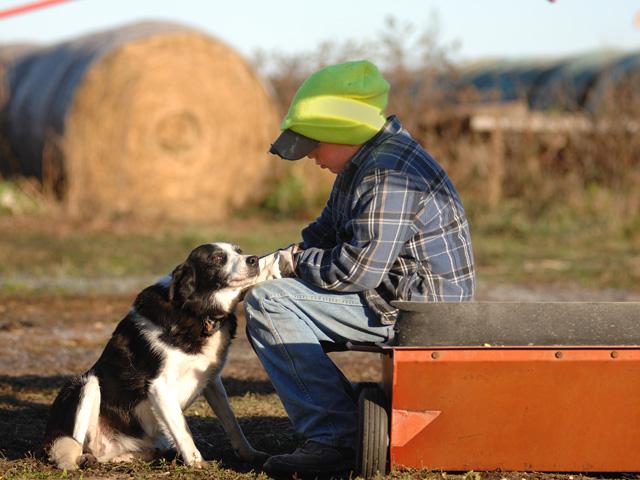Ask the Vet
Extra TLC for Wounds on Dogs
READER QUESTION:
We have a dog with a wound on her front wrist that won't heal. We have used Neosporin, hydrocortisone creams, wound treatments for cattle and horses, and it's just getting worse. She licks at the wound constantly, and it is raised. What do we need to do to help her?
DR. KEN MCMILLAN'S ANSWER:
This is probably what we commonly call a lick granuloma. Other names you may hear for this condition include acral lick granuloma and acral lick dermatitis.
P[L1] D[0x0] M[300x250] OOP[F] ADUNIT[] T[]
This condition, which is actually a complex disease process, often has more than one underlying cause that leads to the excessive licking of an area. Commonly affected sites are on the legs and feet.
Causes can include allergies -- flea allergy dermatitis, environmental allergy (atopic) and food allergy -- bacterial infection, a foreign body such as a splinter, cancer, boredom and orthopedic pain from something like arthritis. Cuts and wounds can develop into lick granulomas. Some dogs even have underlying emotional or behavioral issues that lead to this, similar to obsessive-compulsive behavior in people.
Treatment varies from dog to dog. Oral antibiotics are often needed to control the infectious portion. Ointment and creams containing antibiotics and/or steroids and antifungals can be helpful in some cases, as well. I often use a product called Synotic that contains DMSO and a steroid and penetrates tissue immediately. Wear gloves when using this, as it will penetrate your skin, and if it does, you can taste it.
Anti-inflammatory agents including steroids may be needed to reduce inflammation. Steroids can also help with allergies, but be aware there are some newer products (Apoquel or Cytopoint) that may also be effective in the long-term control of allergies without the side effects we see with steroids.
Repeated bandaging or the use of Elizabethan collars can help by allowing the affected area time to heal.
There is also a new treatment called Phovia. It uses a special gel and an LED lamp that produces multiwavelength fluorescent light energy that penetrates the skin and triggers a healing response in various layers of the skin. It sounds a little like smoke and mirrors, but it is clinically proven and has worked well in our experience.
If you suspect the cause behind all this licking is boredom, stress or anxiety, this must be addressed, as well. Mental issues in people are complex and difficult to diagnose and treat. When it comes to our pets, it can be even more difficult. Identify and control or remove stressors, if possible. Environmental enrichment, including interactive toys, increased exercise and interaction with other people or pets may also help. "Lonely dogs" may benefit from a companion "pet."
Lastly, severe and unresponsive cases may need a detailed workup by your veterinarian. Radiographs may find some bony changes that are leading to pain and excessive licking. Biopsies can rule out cancer or other less common causes. Samples can be cultured to see what organisms are present in the wound, so we know the best antimicrobials to use to treat.
Cases like this are some of the most challenging and frustrating I deal with. In some rare cases, we just had to live with it. But thankfully, most cases can be managed or controlled.
**
Editor's Note: Please contact your veterinarian with questions pertaining to the health of your herd or other animals. Every operation is unique, and the information in this column does not pertain to all situations. This is not intended as medical advice but is purely for informational purposes.
Write Dr. Ken McMillan at Ask the Vet, 2204 Lakeshore Dr., Suite 415, Birmingham, AL 35209, or email vet@progressivefarmer.com.
(c) Copyright 2023 DTN, LLC. All rights reserved.






